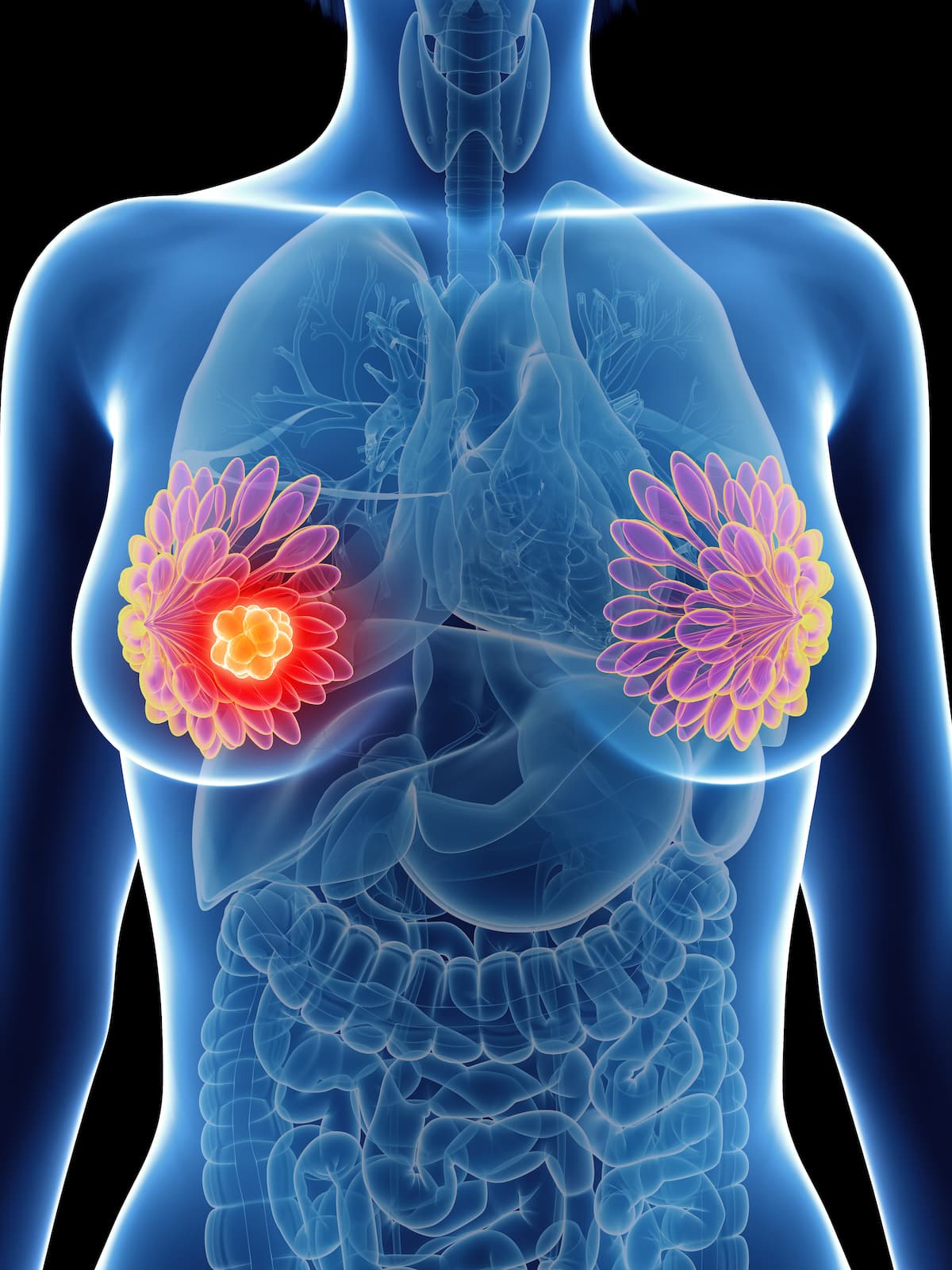Post-Surgery APBI is ‘Attractive’ Option for Low-Risk Early Breast Cancer
The 10-year cumulative local recurrence rate in patients with early breast cancer receiving accelerated partial breast irradiation with multi-catheter brachytherapy does not significantly differ from those receiving whole-breast irradiation following breast-conserving surgery.
The use of accelerated partial breast irradiation (APBI) with multicatheter brachytherapy following breast-conserving surgery yielded comparable efficacy and less adverse effects (AEs) vs whole breast irradiation for low-risk early breast cancer, according to 10-year results from a randomized phase 3 trial (NCT00402519).
"Our findings show that the rate of local recurrence in the experimental group (APBI) was similar to that in the standard treatment group (whole-breast irradiation)…without any significant differences in distant relapse, [DFS], or [OS]," according to the study authors.

With a median follow-up of 10.36 years (interquartile range [IQR], 9.12-11.28), the cumulative 10-year local recurrence rates were 1.58% (95% CI, 0.37%-2.8%) for patients receiving whole-breast irradiation vs 3.51% (95% CI, 1.99%-5.03%) for those receiving APBI (Hazard ratio [HR], 1.88; 95% CI, 0.85-4.12; P = .074).
The cumulative incidence of regional metastasis at 10 years was 0.39% (95% CI, 0.00%-0.94%) and 1.19% (95% CI, 0.31%-2.06%) for those receiving whole-breast irradiation and APBI, respectively (difference, 0.79%; 95% CI, –0.24% to 1.82%; P = .15). Additionally, the cumulative 10-year distant metastasis rate was 2.17% (95% CI, 0.90%-3.44%) and 2.60% (95% CI, 1.30%-3.90%) in each respective group (difference, 0.43%; 95% CI, –1.39% to 2.25%; P = .72).
The 10-year disease-free survival (DFS) rates were 87.95% (95% CI, 85.10%-90.91%) and 84.89% (95% CI, 81.97%-87.91%) in each respective group (difference, –3.06%; 95% CI, –7.22% to 1.09%; P = .18). The 10-year overall survival (OS) rate was 89.52% (95% CI, 86.87%-92.25%) in patients who received whole-breast irradiation and 90.47% (95% CI, 88.09%-92.91%) for those who received APBI (difference, 0.95%; 95% CI, –2.66% to 4.56%; P = .50).
“Our findings show that the rate of local recurrence in the experimental group (APBI) was similar to that in the standard treatment group (whole-breast irradiation)…without any significant differences in distant relapse, [DFS], or [OS],” the study authors stated.
In this randomized, non-inferiority phase 3 trial, patients were randomly assigned 1:1 to either whole-breast irradiation or APBI using multicatheter brachytherapy following breast-conserving surgery across 16 treatment centers in Austria, Czech Republic, Germany, Hungary, Poland, Spain, and Switzerland.
In one treatment arm, patients received whole-breast irradiation in 25 daily fractions of 50 Gy over 5 weeks followed by a supplemental boost of 10 Gy to the tumor bed. In the other arm, patients received APBI totalling 30.1 Gy in 7 fractions and 32.0 Gy in 8 fractions in 5 days as high-dose brachytherapy or as 50 Gy of pulsed-dose brachytherapy over 5 days.
The primary end point of the trial was ipsilateral recurrence rate. Secondary end points included acute and late adverse effects (AEs), cosmetic outcomes, regional recurrence and distant metastasis, OS, and DFS. Investigators conducted exploratory analyses to evaluate treatment results in subgroups based on age, menopausal status, nodal status, hormone receptor status, tumor size and grade, histological type, and involvement of systemic treatment.
Patients 40 years or older who had early invasive breast cancer and underwent local excision of the breast tumor with margins of at least 2 mm in all directions were eligible for enrollment on the trial. Patients also needed to have no lymph or blood vessel invasion to enroll.
Of 1184 patients who received treatment between April 20, 2004 and July 30, 2009 and were eligible for analysis, 551 received whole-breast irradiation, and 633 received APBI. The median patient age at the time of treatment was 62 years (IQR, 54-68) in the whole-breast irradiation group and 62 years (IQR, 54-67) in the APBI group.
In the whole-breast irradiation and APBI groups, respectively, most patients had a sentinel node biopsy (75% and 75%); invasive node-negative disease (95% and 94%); and estrogen receptor–positive, progesterone receptor–positive disease, or both (95% and 95%). Additionally, most patients in each respective group had grade 1 or 2 invasive cancer (92% and 90%), non-lobular invasive histology (87% vs 81%), and received systemic treatment (92% and 91%).
Among all available pathological characteristics in the 2 treatment groups, only grade 2 or 3 tumors and use of systemic therapy—in particular, anti-hormonal therapy—resulted in differences in local recurrence rates. Additionally, only grade 2 or 3 tumors significantly correlated with worse 10-year local recurrence rates compared with grade 1 tumors in the APBI group only. Factors including age, menopausal status, tumor size, histology, and tumor grade correlated with 10-year OS rates in at least 1 treatment group.
Grade 1/2 AEs occurred in 60% of patients receiving whole-breast irradiation and 67% of those receiving APBI at 7.5-year or 10.0-year follow-up, or both. The most common grade 3 AE at 10 years was fibrosis in 2% and 1% of patients in each respective group (P = .56).
Grade 3 late treatment-related AEs (TRAEs) occurred in 4% of patients receiving whole-breast irradiation and 1% of patients receiving APBI (P = .021). No patients discontinued treatment due to TRAEs and no treatment-related deaths were observed in either group. Additionally, there were no grade 4 AEs.
In terms of patient-reported cosmesis, 34% of patients receiving whole-breast irradiation reported having “excellent” cosmesis at 10 years compared with 45% of those receiving APBI.
“APBI using multicatheter brachytherapy should be considered as an attractive standard treatment option for patients with low-risk early breast cancer opting for breast-conserving surgery and postoperative radiotherapy,” the study authors concluded.
Reference
Strnad V, Polgár C, Ott OJ, et al. Accelerated partial breast irradiation using sole interstitial multicatheter brachytherapy compared with whole-breast irradiation with boost for early breast cancer: 10-year results of a GEC-ESTRO randomised, phase 3, non-inferiority trial. Lancet Oncol. 2023;24(3):262-272. doi:10.1016/S1470-2045(23)00018-9